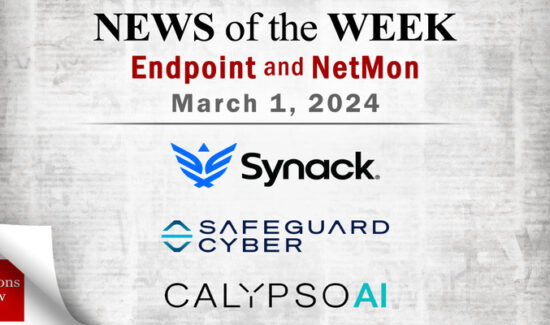Making the Rounds of Endpoint Security Vendor Blogs


We have been known on more than occasion to read through vendor blogs to get a sense of the situation on the ground in cybersecurity. After all, who knows the most pressing issues of the day than those fighting daily against hackers?
On those occasions, we’ve compiled findings from a singular selected solution provider, reading through their posts of Q1 of 2018—already a dramatic year in cybersecurity. Today however we decided that instead of reading through the blog of one endpoint security vendor, we’d read through the most recent posts from a few different vendors to gauge the latest issues in endpoint protection. We found some fascinating findings from Sophos, Ivanti, Bitdefender, and Symantec.
Here’s what we found:
Chrome Extension That Knows You By Your Typing Style by Sophos
Although primarily an endpoint security vendor, Sophos’ blog post examines a new multifactor authentication Chrome extensions by Romanian startup TypingDNA. This tool, oriented to identity management rather than endpoint security, utilizes keyboard dynamics—the distinct way a user types—an as authentication method; it observes how you type your credentials in, and if it matches previous typing styles unlocks local encryption keys.
The article and the tool are fascinating in their own right, but the article also highlights the blurred lines between the different divisions of cybersecurity. Your cybersecurity policy needs to consider not only endpoint security but identity management and security analytics—and they need to integrate properly with each other to best protect your data.
Patching? Sooo Not A Solved Problem… by Ivanti
Endpoint security vendor Ivanti points out that while patching software for security holes has become ubiquitous, patching has issues of its own. Newer software may not be properly patched, which may still put it above older software and applications: not only are they more likely to have security holes from the march of time, they are less likely to be patched at all.
Ivanti’s article also points out a much deeper problem in patching: new software is inherently vulnerable by simple human error. How we conduct patches may need to change to accomodate this inescapable truth.
Nearly All Cybersecurity Workers on the Job Hunt by Bitdefender
Bitdefender reports that 84%—an overwhelming majority—of cybersecurity professionals are on the hunt for a new job. Despite the ongoing cybersecurity staffing crisis, 70% of the respondent cybersecurity professionals already have jobs but are open to new opportunities. That doesn’t bode well for the crisis.
The reason for this perpetual job hunt? Cybersecurity professionals don’t feel engaged, heard by their organizations, or that they work with clear responsibilities. The latter is especially galling for many of the respondents. A majority report feeling that their vague and inaccurate job descriptions indicate a lack of cybersecurity knowledge in their enterprises—and a lack of respect.
Ransomware: Prevention is Possible, A Cure—Not So Much by Symantec
According to endpoint security vendor Symantec, enterprises are particularly vulnerable to the worm-type ransomware attacks that exploit highly networked systems. The reason is simple: it offers a much higher payout to hackers. While a hacker can hold a single computer hostage for a few hundred dollars, they could hold an entire enterprise’s network hostage for millions.
Symantec recommends a regular backups of corporate systems and databases, implementing email filtering, and ensuring an incident response plan is in place to prepare for the inevitable arrival of ransomware. Even if ransomware attacks’ can’t be completely prevented, preventing their spread can mitigate the damage it can inflict on your enterprise. Like the old saying goes “An ounce of prevention…”























